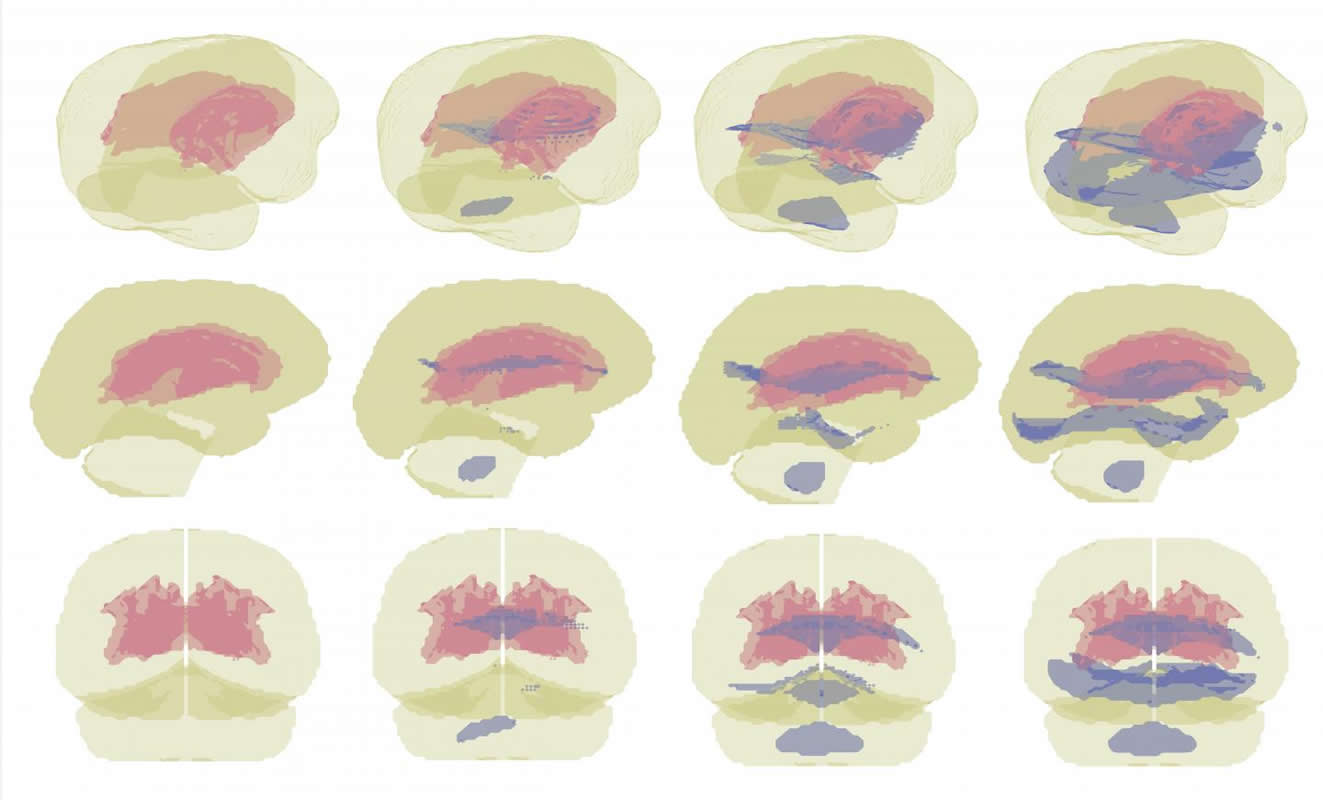Summary: Side impact to the head can lead to rotational accelerations what cause mechanical vibrations to concentrate in the corpus callosum and periventricular region of the brain. Trauma to the side of the head can lead to concussions.
Source: Stevens Institute of Technology
Play contact sports for any length of time and at one point or another you’re probably going to have your ‘bell rung’ by a powerful blow to the head from a hard hit or fall. Rising awareness of the severe, abiding repercussions of strong impacts to the head–concussions, mild traumatic brain injury, neurological disorders–have led scientists to focus on what exactly happens inside a skull during a big hit.
Mehmet Kurt, a mechanical engineer at Stevens Institute of Technology who studies the biomechanics of the brain and the skull at rest and during rapid head movements, has now bioengineered simulations that track how the brain behaves upon impact, reconstructing the inertial stresses and strains that prevail inside a brain that’s just been hit hard from the side.
“The brain not only rings, but it has a distinct pattern of ringing when the head is hit from the side and experiences rotational acceleration,” said Kurt, whose work may not only have implications for brain injury assessment, but for sports helmet makers in search of measurable parameters that can simply distinguish ‘concussion’ from ‘no concussion’ to help the industry set safety standards. The paper appears in the July 30 issue of Physical Review Applied.
By analyzing a combination of simulated and human data of brain movement that have led to concussions, Kurt and his group, including Stevens graduate student Javid Abderezaei, digitally reveal that side impacts to the head lead to rotational accelerations that cause mechanical vibrations to concentrate in two brain regions: the corpus callosum, the bridge that links the hemispheres, and the periventricular region, white matter lobes at the brain’s root that helps speed muscle activation.
Kurt and Abderezaei, with Kaveh Laksari of the University of Arizona and Songbai Ji of Worcester Polytechnic Institute, found that the skull’s internal geometry and the gelatinous nature of the brain cause these two regions to resonate at certain frequencies and receive more mechanical energy in the form of shearing forces than the rest of the brain. More shear strain presumably yields more tissue and cell damage, particularly since shear, opposing motions tend to deform brain tissue more readily than other biological tissues.

“A hit to the head creates non-linear movement in the brain,” said Abderezaei. “That means that small increases in amplitude can lead to unexpectedly big deformations in certain structures.”
These non-linear vibrations are not surprising in a complex organ featuring a range of tissue densities. Add in the restraining effects of the tough protective membranes, particularly the falx and the tentorium, that hold the brain in place from both above and below, and certain regions are bound to come off worse in side hits.
Identifying the parts of the brain that are most at hazard in side impacts makes them prime targets for further investigation in quest of insights into concussions and detailed brain behavior in collisions. Such knowledge can’t come soon enough more than 300,000 American children and teenagers suffer sports-related concussions every year.
In 2018, Kurt and his colleagues won a Vizzies people’s choice award for video showing how the brain moves at rest with every heartbeat.
Source:
Stevens Institute of Technology
Media Contacts:
Thania Benios – Stevens Institute of Technology
Image Source:
The image is credited to Stevens Institute of Technology.
Original Research: Closed access
“Nonlinear Dynamical Behavior of the Deep White Matter during Head Impact”. Javid Abderezaei, Wei Zhao, Carissa L. Grijalva, Gloria Fabris, Songbai Ji, Kaveh Laksari, and Mehmet Kurt.
Physical Review Applied. doi:10.1103/PhysRevApplied.12.014058
Abstract
Nonlinear Dynamical Behavior of the Deep White Matter during Head Impact
Traumatic brain injury (TBI) is a major public health concern, affecting as many as 3 million people each year in the U.S. Despite substantial research efforts in recent years, our physical understanding of the cause of injury remains rather limited. In this paper, we characterize the nonlinear dynamical behavior of the brain-skull system through modal analysis and advanced finite-element (FE) simulations. We observe nonlinear behavior in the deep-white-matter (WM) structures near the dural folds, with an energy redistribution of around 30% between the dominant modes. We find evidence of shear-wave redirection near the falx and the tentorium (approximately 15 degrees in the axial and 8 degrees in the coronal plane) as a result of geometric nonlinearities. The shift in the falx mode shape, which is perpendicular to the deformation of the brain, causes geometrical nonlinear effects at the falx-brain tissue boundary. This is accompanied by a lateral sliding of the tentorium below the brain tissue, which induces higher local strains at its interface with deep regions of the brain. We observe that deep regions of the brain with high principal strains coincide with the identified nonlinear regions. The onset of nonlinear behavior in brain tissue is closely associated with the previously reported concussion thresholds, suggesting a possible link between the damage mechanism and the underlying nonlinear brain biomechanics.






